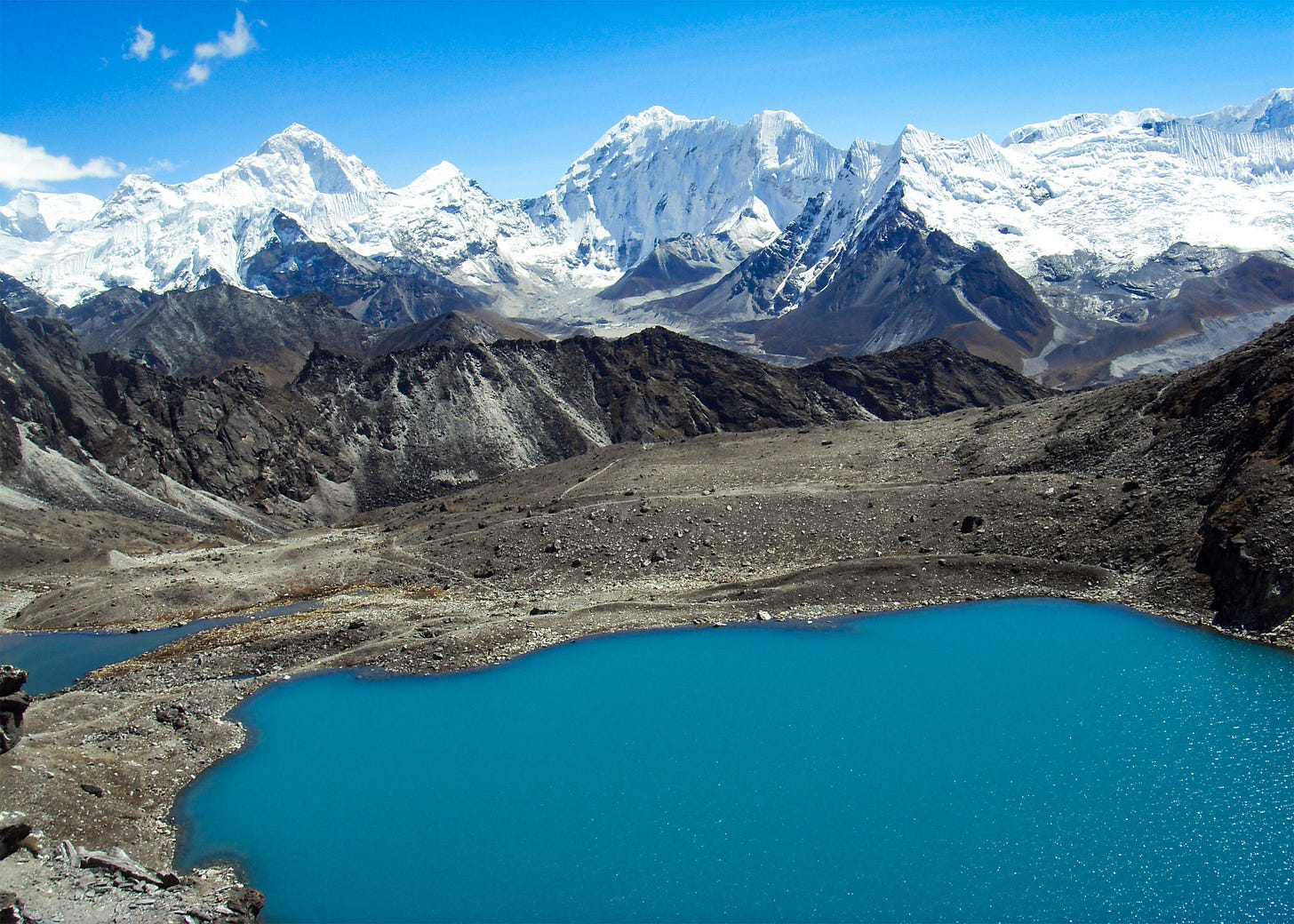Glacial Lake Outburst Floods Threaten Nepal's Himalayan Communities
Increasing global temperatures are predisposing the South-Asian Himalayan nation to worse floods

As temperatures continually rise due to climate change, the Himalayan region is facing increasing environmental risks. In Nepal, the Himalayas are warming faster than other areas in the country, with an average temperature increase of 0.08°C per year, according to the country’s Department of Hydrology and Meteorology.
Nepal's landscape includes flat plains, mountains, and the Himalayas, which cover about 15% of the country’s total area of 147,516 square kilometers. The Himalayan region is also home to eight of the world's 14 highest mountains, including Mount Everest.
The rising temperatures are causing glaciers to melt faster, leading to the formation of glacial lakes. In 2015, a study mapped 3,624 glacial lakes in the Koshi, Gandaki, and Karnali river basins, Nepal's largest river systems. These lakes covered 195.13 square kilometers. By comparison, in 2005, there were 3,696 lakes, covering 186.44 square kilometers. Though the number of lakes had decreased, their total area had grown due to the rapid melting, and a recent report has identified 47 lakes in Nepal as dangerous, meaning they could burst at any time, leading to severe flooding.
Chairperson of the Nepal Water Conservation Foundation, Ngamindra Dahal, describes this situation as alarming. He said, "Climate change is having a stronger impact [on areas] above 3,000 meters in Nepal. If we don't take serious action, we could face huge losses of lives and infrastructure. It’s important to focus efforts on the Himalayan region." Dahal stressed the need for better monitoring of glacial lakes to identify those at risk of bursting.
The Destabilizing Consequences
If a glacial lake bursts, the impact could be catastrophic.
On September 16, 2024, a small glacial lake burst in the Solukhumbu district, near Mount Everest. Although it was not marked as dangerous, the damage amounted to about USD 10 million. The Thame village in the area was wiped out by the resulting flood, destroying 55 homes, schools, health posts, and hydropower facilities.
Thankfully, no one died because the flood occurred during the day. "Had it happened at night, many lives would have been lost," said Mingma Chhiri Sherpa, Chairperson of the Khumbu Pasang Lhamu Rural Municipality.
Nepal has had other bad experiences with Glacial Lake Outburst Floods (GLOFs). In 2016, a glacial lake burst in Tibet, causing significant damage in Nepal — twenty houses, a school, roads, and a 45 MW hydropower project were destroyed.
Nepal has experienced at least 24 GLOF events before, 14 of which occurred within Nepal, and 10 caused by floods from Tibet.
What is the Solution?
Although Nepal can’t control rising temperatures, experts say it can reduce the risk of GLOFs.
According to Basanta Raj Adhikari, an engineering professor at Tribhuvan University with extensive knowledge of the issue, the first step is to map all glacial lakes in Nepal and request China to do the same for lakes in Tibet, whose waters flow into Nepal. “We need to understand the situation of all these lakes," Adhikari said. "For those in danger, lowering the water levels is the main solution."
Nepal has some experience in reducing water levels. In 2016, the water level of the Imja glacial lake was lowered by three meters, which helped protect more than 12 villages from potential flooding. Similarly, in 2001, Nepal reduced the water level of the Tso Rolpa glacial lake.
The Department of Hydrology and Meteorology is working on plans to lower the water levels of four other dangerous lakes: Thulagi, Lower Barun, Lumding Tsho, and Hongu-2. Jagadishwor Karmacharya, Director General of the department, noted that they have applied for funding from the Green Climate Fund for this project.


